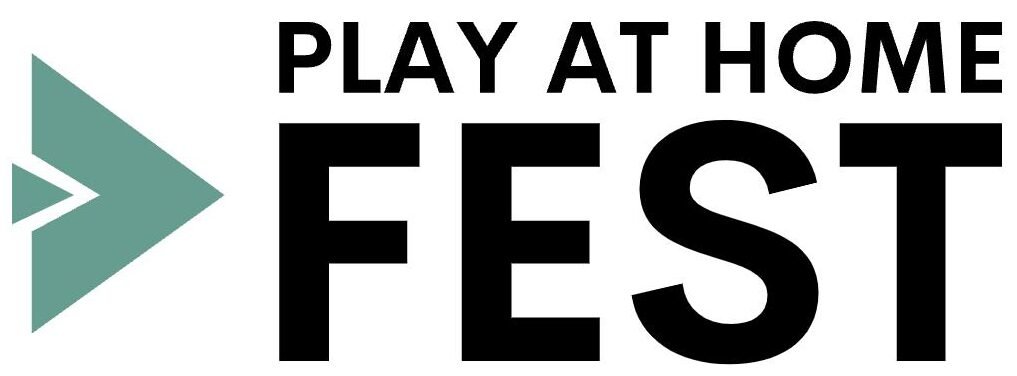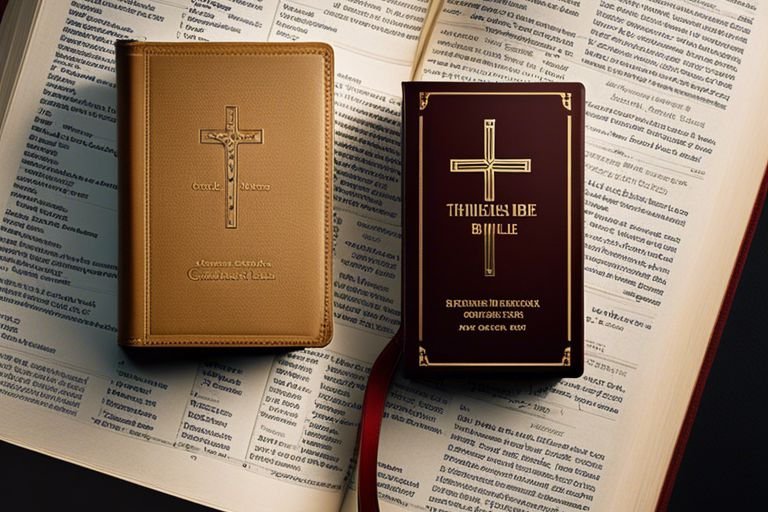Perplexed by the array of Bibles available in the market? Many people are unaware that the Christian Bible and Catholic Bible are not one and the same. As a Biblical scholar, I understand the nuances that distinguish these two revered texts. In this guide, I will delve into the intricate differences in the biblical canons of the Christian and Catholic Bibles, shedding light on the history, contents, and significance of each. By the end of this post, you will have a clear understanding of the variations and be equipped to make an informed decision about which Bible suits your spiritual needs.
Key Takeaways:
- Number of Books: The Christian Bible contains 66 books, while the Catholic Bible contains 73 books. The additional books in the Catholic Bible are referred to as the deuterocanonical books.
- Old Testament Differences: The Catholic Old Testament includes seven additional books not found in the Christian Old Testament, which are Tobit, Judith, Wisdom, Sirach, Baruch, and 1 and 2 Maccabees, as well as additional chapters to the books of Esther and Daniel.
- New Testament Alignment: Both the Christian Bible and the Catholic Bible share the same 27 books in the New Testament, as there are no differences concerning the books included in the New Testament canon.
- Authority of the Church: The Catholic Church’s acceptance of the deuterocanonical books stems from the authority of the church, which recognizes them as inspired scripture. However, these books are not included in the Protestant Christian Bible due to their absence from the original Hebrew scriptures.
- Interpretation and Tradition: The differences in canons highlight the importance of interpretation and tradition within different branches of Christianity, as well as the impact of historical and ecclesiastical influences on the development of the biblical canons.
Understanding the Differences Between the Christian Bible and Catholic Bible
To truly understand the differences between the Christian Bible and the Catholic Bible, it’s important to delve into the historical background and development of the biblical canons, as well as examine the key distinctions in the Old Testament and New Testament canons.
Historical Background and Development of Biblical Canons
The historical background and development of the biblical canons play a significant role in understanding the differences between the Christian Bible and the Catholic Bible. The Christian Bible, also known as the Protestant Bible, comprises 66 books, while the Catholic Bible consists of 73 books. The process of canonization differed between the two traditions, with the Catholic Church finalizing its canon at the Council of Trent in the 16th century, while the Protestants embraced the shorter canon of 66 books during the Reformation. Understanding the historical context of canonization is crucial in comprehending the differences between these two biblical canons.
Key Differences in the Old Testament Canons
One of the key differences between the Christian Bible and the Catholic Bible lies in their Old Testament canons. The Catholic Bible includes several books, such as Tobit, Judith, Wisdom, Sirach, Baruch, and others, which are not found in the Protestant Old Testament. These books, known as the deuterocanonical books, have been a point of contention between the two traditions. Their inclusion or exclusion has significant implications for theology and doctrine, making it essential to recognize the disparities in their Old Testament canons.
Key Differences in the New Testament Canons
Another crucial distinction between the Christian Bible and the Catholic Bible can be found in their New Testament canons. While both traditions share the same 27 books in the New Testament, the Catholic Bible includes additional texts known as the deuterocanonical books, which are not present in the Protestant New Testament. These books, such as the Book of Tobit and the Book of Wisdom, contribute to theological differences between the two traditions. Understanding the variations in their New Testament canons is fundamental in comprehending the discrepancies between the Christian Bible and the Catholic Bible.
Factors to Consider When Comparing Biblical Canons
If you are trying to understand the differences between the Christian Bible and the Catholic Bible, there are several factors to consider. Here are some key points to keep in mind:
- Number of Books: The Christian Bible typically consists of 66 books, while the Catholic Bible has 73 books. This difference in the number of books is one of the most notable distinctions between the two canons.
- Language and Translation: The original texts of the Christian and Catholic Bibles were written in different languages – primarily Hebrew, Greek, and Aramaic. Translations of these manuscripts into English and other languages may also vary, leading to slightly different versions of certain passages.
Knowing these fundamental differences is crucial when comparing the two Biblical canons.
Importance of Tradition and Church Authority
When analyzing the differences between the Christian and Catholic Bibles, it is essential to recognize the significance of tradition and church authority. The Catholic Church has a long history of interpreting and preserving the biblical texts, and the authority of the church plays a significant role in the formation of the Catholic Bible. Understanding this historical context and the influence of tradition is crucial in comprehending the divergences between the two canons.
Impact of Cultural and Historical Context
The cultural and historical context in which the Christian and Catholic Bibles were compiled and preserved has a profound impact on their respective canons. Different cultural and historical factors have shaped the inclusion or exclusion of certain books in each canon, leading to variations in the contents of the two Bibles. Recognizing the influence of these contexts is essential for gaining insight into the differences between the Christian and Catholic Biblical canons.
Influence of Theological Interpretation
Theological interpretation plays a crucial role in understanding the differences between the Christian and Catholic Bibles. The interpretation of biblical texts by theologians and religious authorities has contributed to the selection and acceptance of specific books in each canon. Recognizing the influence of theological interpretation is essential for comprehending the variations in the contents of the Christian and Catholic Bibles.
Pros and Cons of the Christian Bible and Catholic Bible
For Christians and Catholics, the Bible is a central part of their faith and practice. The Christian Bible and the Catholic Bible have some similarities, as they both contain the Old and New Testaments, but they also have some key differences. Here, I will explore some of the pros and cons of each version to help you understand the distinctions between them.
| Christian Bible | Catholic Bible |
| Contains 66 books | Contains 73 books |
| Widely accepted among Protestant denominations | Used by Catholics in worship and teaching |
| Emphasis on faith and grace | Includes the Apocrypha, additional books not found in the Christian Bible |
| Focus on individual interpretation | Emphasis on tradition and church authority in interpretation |
| Translational differences may impact meaning | Longer history of interpretation and teaching by the Church |
Advantages of the Christian Bible
The Christian Bible’s shorter canon can make it more approachable and easier to navigate for new believers. Its emphasis on individual interpretation can also lead to a deeper personal connection with the text, as you are encouraged to seek understanding through prayer and study.
Advantages of the Catholic Bible
The Catholic Bible’s inclusion of the Apocrypha provides a more comprehensive understanding of the historical and cultural context in which the scriptures were written. The Church’s tradition and authority can provide interpretation and guidance, offering a sense of unity and continuity within the faith.
Disadvantages of the Christian Bible
The Christian Bible’s shorter canon may be perceived as lacking in depth and richness by some, as it omits books considered sacred by other Christian traditions. Additionally, the emphasis on individual interpretation can lead to diverse and sometimes conflicting understandings of the text.
Disadvantages of the Catholic Bible
The Catholic Bible’s inclusion of the Apocrypha may be seen as adding complexity and confusion for some readers who are not familiar with these additional books. The reliance on tradition and church authority could potentially limit personal exploration and growth in faith.
Conclusion
Considering all points discussed, it is clear that the Christian Bible and the Catholic Bible have notable differences in their biblical canons. The inclusion of the Apocrypha and additional books in the Catholic Bible sets it apart from the Protestant Christian Bible. These differences have historical and theological implications for the understanding and interpretation of the scriptures within each tradition. It is important to be aware of these distinctions in order to have a comprehensive understanding of the biblical canons and to appreciate the unique perspectives and teachings of both traditions.
Christian Bible vs Catholic Bible – Understanding Differences in Biblical Canons
Q: What is the Christian Bible?
A: The Christian Bible is a collection of sacred texts or scriptures that Christians regard as divinely inspired and authoritative. It is divided into two main sections, the Old Testament and the New Testament, and contains 66 books.
Q: What is the Catholic Bible?
A: The Catholic Bible is a Christian Bible that includes additional books known as the deuterocanonical books or Apocrypha, which are not found in the Protestant Bible. It consists of 73 books, with 46 in the Old Testament and 27 in the New Testament.
Q: Why do the Christian Bible and the Catholic Bible have different numbers of books?
A: The difference in the number of books between the Christian and Catholic Bibles can be attributed to the decisions made by early Christian councils and the inclusion of certain books in the Catholic tradition that were not accepted by all Christian traditions.
Q: What are some examples of the deuterocanonical books in the Catholic Bible?
A: Some examples of the deuterocanonical books found in the Catholic Bible include Tobit, Judith, Wisdom, Sirach (Ecclesiasticus), Baruch, and 1 and 2 Maccabees. These books are considered to be part of the Old Testament canon in the Catholic tradition.
Q: How do the differences in biblical canons between the Christian and Catholic Bibles impact religious teachings and practices?
A: The differences in biblical canons between the Christian and Catholic Bibles can lead to variations in religious teachings and practices, particularly in the interpretation of certain doctrines and the use of specific biblical passages to support theological beliefs. It is important for individuals to be aware of these differences when studying the Bible or engaging in religious discussions.




